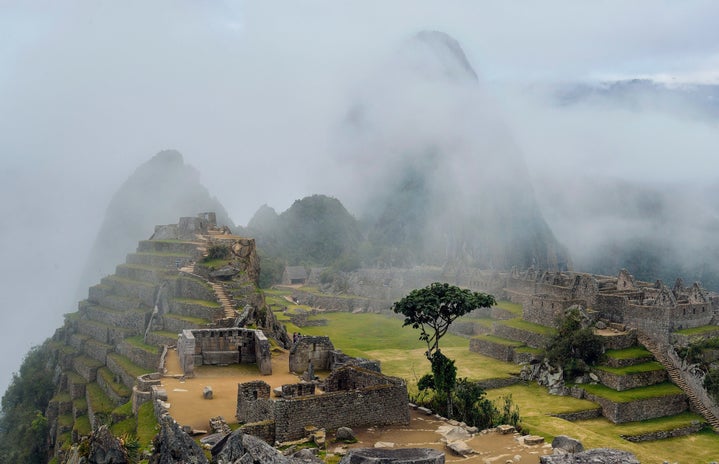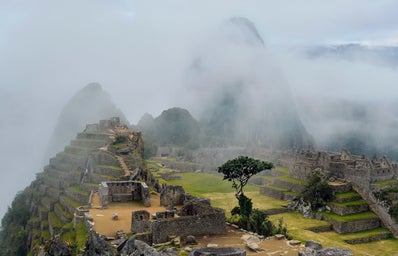Have you ever had the opportunity to visit a place where you can keep in touch with its History, such as by taking a walk or going on a guided visit to a museum?
Well, during her Euro Summer trip, Beatriz Dibi, a law student, and her family, could experience it. She observed a difference in the treatment of History preservation in Brazil and in some foreign regions. While in the national context culture is seen as something that should be less preserved and encouraged, in other countries, especially the colonizer ones, it is the basis of society. And this is due to historical and economic questions.
The Parisian sacred monument, Notre Dame, caught fire on April 15, 2019, turning into ashes a material part of French History. However, the government gathered forces to raise one of the most iconic symbols of the country again. To do so, according to the experts monitoring and heading the process of reconstruction, they are making an effort to make it identical to the original one by studying the composition of the structure, using the same material and even identical medieval tools to polish stones, wood and other essential elements, so it can be perfectly equal. And Dibi could see it in person, and learn a bit of French history.
A HISTORICAL ISSUE
During the middle of the 18th century and the beginning of the 19th one, in Europe, a project of “nation” began to grow due to the unification of Italy, Germany after a growing industrial bourgeoisie in the continent. “Nation” would be the unity of the individuals that recognize themselves as citizens of one country or another and, with that, the idea of a “belonging” showed off being what we call, nowadays, “culture”.
Because of that, in these places, governments and the general population naturalized the fact their History must be kept alive to live. On the other hand, peripheral and colonized regions that had their journey governed and built by others – for instance, Brazil – understand themselves more as a result of these “bigger Histories” than an independent land with its own material and immaterial heritage.
Furthermore, as stated by André Galletti, a History teacher who graduated from Universidade de São Paulo (USP) and specialized in Modern and Contemporary History, the History known for most people of the colonized countries is, generally, romanticized since it gives the impression of being a beautiful and great achievement.
The real thing is not that perfect. In Brazil, for example, the independence was made by the colonizer and the new type of government was a Monarchy and not a Republic in the same way of the majority of countries. And, in this sense, the historian has to be inconvenient and touch in still opened wounds, to tell the real story. People don’t want to see and show this, they look for sharing great and heroic deeds, in the same way of the gigantic revolutions outside here.
André Galletti
A GLOBALIZATION PHENOMENON
Fernanda Sortanji Lopes, an incessant traveler and teacher who graduated in Geography, Leisure and Tourism at the University of São Paulo, adds that “sheltering History obstacles are increasing over the decades, especially because of the process of globalization and gentrification.” Both are developed from the constant valuation of urban areas with a huge concentration of people, which leads to the destruction of small villages, the expelling of elderly families from the place they built their journey and replacing these spaces with more technological and modern buildings. “This erases the stories of several people, resulting in the beginning of another one, but forgetting a little bit of the one before.”
REPERCUSSION IN LATAM
However, she reminds us that there are some territories that are brilliantly successful in this mission of keeping their History vivid, for instance, Peru, Mexico and Colombia in Latin America. “…[Peru], with Machu Picchu as the most visited city in South America, shows, through the preserved ruins, a spectacular Inca city, in the same way as Mexico, Guatemala, Honduras, Ecuador and Colombia, which have an immense collection and incredible cities that showcase their stories.” On the other hand, “because of the social and economic circumstances of other zones, such as Guiana, it is perhaps one of the most difficult countries to travel to in the continental part of the continent due to the lack of infrastructure” what impacts directly in the investments in culture investments.
It is imperative to emphasize the Brazilian reality too, bearing in mind its worldwide relevance in all areas. “Brazil has a lot of diversity and immense tourist potential, both from a natural and cultural point of view, although it is far from its peak of ‘exploitation’ (tourism).” There are dozens of historic cities (in Minas Gerais, Goiás, Bahia, Maranhão, Alagoas, etc.), which, as the name suggests, are places where “we can immerse in a scenario of centuries of colonial and slave past, but we also have cities that, even with the changes over time, preserved monuments and places from the beginning or middle of the 20th century, e.g. villages of industrial houses in the city of São Paulo.”
Nevertheless, as reported by her, in numerous constructions have been abandoned and/or being transferred to endless real estate speculation, which means a long political battle to be fought yet.
IN EUROPE
But before you, reader, think just America struggles with this type of controversy, Europe faces it too. Sortanji admits this continent holds much of the world’s past and takes care of it very well, highlighting the UK, Portugal and some Balkans countries. “There we can find many preserved cities, with traces of the past in the streets, houses, buildings, monuments and museums. A great example could be the United Kingdom, Portugal and, if we go towards Eastern Europe and the Balkans, we see the mark of a not too distant past in the spaces designed to remember the wars that marked the region.”
In spite of that, when I asked for places that still have a long way to go there in these goals, she had to recap in her mind a little more deeply, but came up with Albania “because there is not much development, even in some cities it is possible to see historical marks and the (slow) advancement of tourism, so people are able to know them.”
AND IN ASIA
Last, but not least, Fernanda points out the fact that Asia is a “cultural melting pot”. It is compounded by the union of extremely diverse countries with lots of converging narratives, but somehow so unique, she says. “China has an incredible legacy that is little talked about or known in the world. Southeast Asia, despite the “chaos”, shows us, through Thailand, Malaysia, Singapore and Vietnam, for example, a world of possibilities to explore.”
These were already expected to have much to share and find out, Lopes continues, but she emphasizes a “delightful surprise” with Myanmar, the old Birmany, Laos and Cambodia. “The former has a unique culture, which, even though economic poverty, can be enjoyed in many places in the country. The latter may have more difficulty due to resources, but even so, it is possible to discover incredible places and a lot of history.”
Asymmetrically, Asia also set aside the question that “richer countries, invest more” with the case of Saudi Arabia. “During the time I could stay there, I only visited the capital. It has a lot of money and, incompatibly, there are not many places to appreciate the history of the city or the country.”
A CAPITALIST QUESTION
This happens, according to Galletti, since “the world is led by the capitalist system, in which what is the most lucrative gains more space. In addition, culture, for places that don’t historically value it in the way it is, does not create a quick and easy profit, and that’s why there is so little investment in researchers, historians and other careers that starve for these investigations. Even though it is not ALWAYS like that, there are the exceptions discussed previously by Fernanda.”
“Unfortunately, capitalist society is individualistic and does not think about the collective good.” This blind people to the potential of tourism “as cities can guarantee jobs, mainly moving the tertiary sector (commerce, hotels, transport) and also spread education and knowledge, which does a lot of good so that this cycle does not end.”
HOW TO SOLVE IT?
Some solutions to revert this reality are:
- to finance the research areas, in order to give more job and life perspective to these professionals, so they can keep studying and live as researchers.
- boost the development and construction of more document and cultural collections;
- revitalize physical and online acquits that already are responsible for storing History, such as cinema, theater, museums, libraries, etc.;
- invest qualitatively in the tourism and the basic education sector, so the citizens can learn with and enjoy all resources with ease;
And encourage people to get to know more about where they live constantly, since it improves the feeling of belonging and pride and gives them the same experience Beatriz had during her trip, André in his studies and Fernanda in Goiás, Brazil:
“The first time I visited the City of Goiás, also known as Goiás Velho, in Goiânia. It was a feeling of being in the past. It is a small city, but very preserved. I got emotional every day I spent in the city, just walking through the streets: the feeling of walking through past centuries was very interesting.
Recently, I was able to return to the city for the Festa do Fogaréu, considered Intangible Cultural Heritage, held since 1745, during Holy Week. It would be almost impossible to describe the emotion of being together with thousands of people who every year celebrates this more than religious moment. Going a little further, in 2018 I lived in the Philippines, in the second most economically important city after the capital Manila. The island was called Cebu and the place I stayed was Lapu-Lapu.
Whenever I arrive in a new city I like to walk around and see the tourist attractions, squares, parks, museums and whatever else there is, culturally speaking, in addition to the natural aspects, which are also important to me. And here, I had a lot of difficulty finding these places.
The few I found were poorly preserved or simply abandoned. In conjunction with my discomfort as a tourist, I thought about the population, who never had the opportunity to experience their history through museums or perhaps, watch a theater show.The world has an infinite possibility of experiences, but unfortunately it is still extremely unequal.”
—————————————————————–
The article above was edited by Beatriz Gatz.
Liked this type of content? Check Her Campus Cásper Líbero home page for more!


